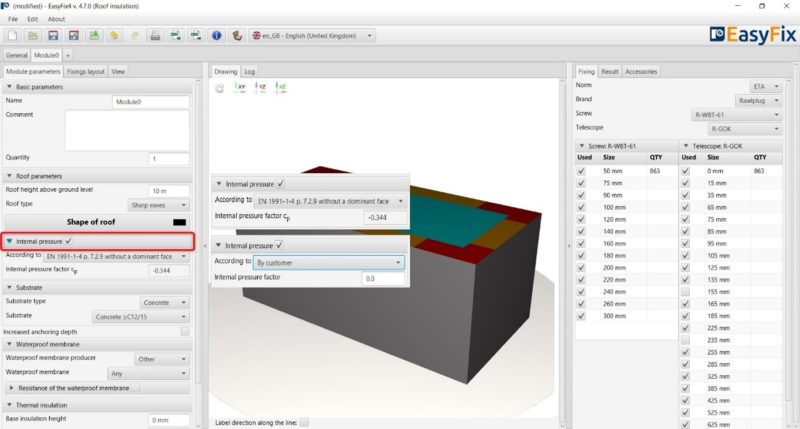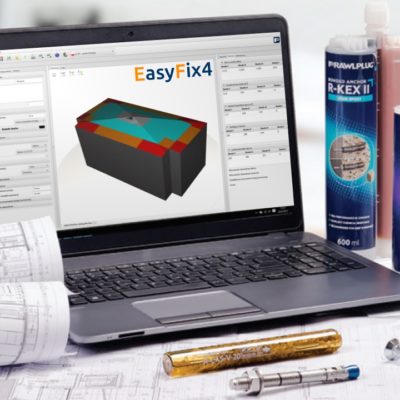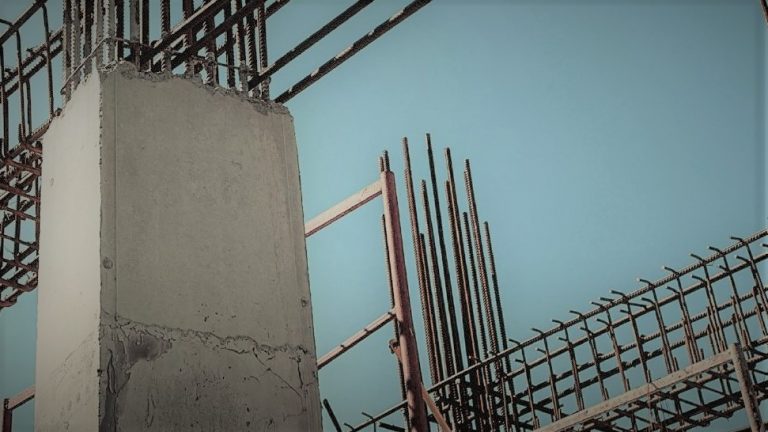Consideration of internal pressure in wind load calculations for buildings.
Wind is the only variable load acting on any type of structure in any country in the world. EN 1991-1-4, which is part of Eurocode 1, defines the principles and calculation methods for the effects of wind on buildings less than 200 m in height. Unlike the other standards in EN 1991-1-4, each country has its own “National Annex”. This includes wind zones (geographical map) and other factors.
The complex architecture of buildings and the requirements of the wind load standards make defining these loads one of the big challenges for designers.
According to the standard, simultaneous internal and external pressures must be considered.

Picture 1. Pressure exerted on building surfaces
Depending on the element under consideration (wall, roof), the most unfavourable combination of external and internal pressure for possible openings and leaks must be taken into account.
In the case of external pressure, this is always taken into account by designers. As many buildings are enclosed, internal wind pressure is often negligible when determining loads. However, it should be borne in mind that window gates and other openings in the enclosure can significantly affect the load on hall and warehouse enclosures in particular.
EN 1991-1-4 introduces the concept of a ‘dominant wall’ as a wall in which the area of openings is at least twice the size of the openings and leaks in the other walls of the object under consideration.
In the case of a building without a dominant wall, the internal pressure coefficient cpi is determined from a diagram in the standard depending on the ratio of the building height to its dimension in the wind direction.
For a building with a dominant wall, the internal pressure should be determined as a proportion of the external pressure occurring in the area of the openings on the dominant wall.
If the area of the holes in the dominant wall is equal to twice the area of the holes in the other walls then:
cpi = 0,75 cpe
If the area of the holes in the dominant wall is at least equal to three times the area of the holes in the other walls then:
cpi = 0,90 cpe
where cpe is the value of the external pressure coefficient in the area of the openings in the dominant wall.
The EasyFix calculation programme allows internal pressure to be taken into account in the design cases for the fixing of object cladding, both in the sheet and layer board module and the fixing of waterproofing on a flat roof.

Picture 2. Internal pressure in EF4 flat roof module programme
If there is no dominant wall, the programme selects the cpi from the standard based on the dimensions of the building. For a dominant wall, the user decides the cpi value himself
Based on EN 1991-1-4 Actions on structures. General actions – Wind actions.
Need design support? Contact with us – Rawlplug Technical Helpdesk
Start designing with us today! – download EasyFix
Find out more at rawlplug.com












Comment section
Share this article: